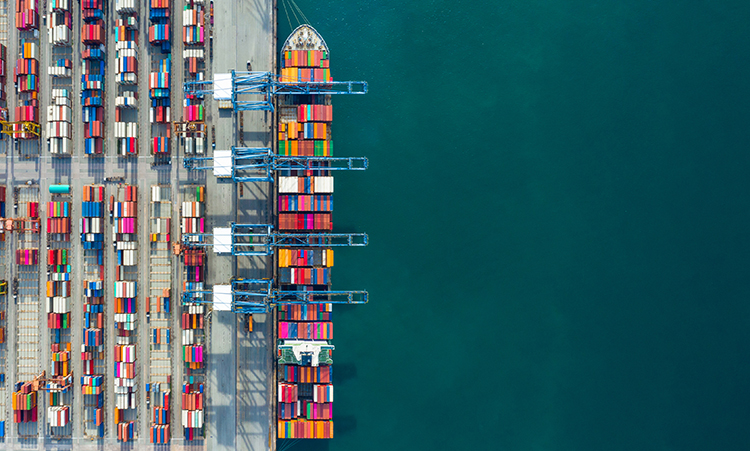
Port slowdowns in Asia have given U.S. ports a brief reprieve from the flood of shipping vessels and containers that they struggled to offload during the winter and spring months. That being said, panelists on the May 18 Hoard’s Dairyman DairyLivestream are already anticipating the deluge of ships sure to return to American shores as the Asian ports ramp up their loading and unloading following the most recent COVID-19 related shutdowns.
One such port is the Port of Shanghai that is beginning to fully reopen following a two-month lockdown due to COVID-19. Well over 500 ships are waiting to berth and unload inbound cargo to China.
The Port of Oakland’s Andrew Hwang described a few of the changes in American ports that are directed toward helping manage an influx of shipping containers in future months. Highlighting the list of port improvements are the use of pop-up shipping yards.
“We took about 22 acres on one of our pieces of land at the port,” Hwang said in description of Oakland’s pop-up yard. “We've actually leased it out to a terminal operator who has come in and acquired container handling equipment. This space can be used to not just park chassis and containers, but also to take containers off the chassis and be able to stack them.”
The pop-up yards cannot load directly onto ships, but they are instead used as a staging area for both empty containers and those ready to be moved to the ocean terminal for loading.
“Ideally, what we want is for exporters to pull containers from this location to go out to load and then come back into the actual ocean terminals to stage to load on to vessels,” Hwang explained. “The benefit is that you are freeing up chassis to the market, and chassis are one of the big components of the bottlenecks.
“By my estimate, we have probably freed up anywhere between 1,000 and 1,200 chassis to the market just through this pop-up yard in the last 30 days,” he continued. “So, it is contributing to the fluidity in the market.”
Empties are essential
Freeing up empty containers is critical for those that are trying to export products. Reloading the containers and returning them to the port can be a long process, so ease of access is critical. To understand a little of the scope of the process, Hwang described the logistics of a normal system.
“If you use normal traditional figures when things are not congested — and using the example of a very simple Shanghai to LA service vessels to make that ride back and forth —we need one container on each ship, and then you need one and a half in Shanghai, one and a half in LA, or unloading. That is to maintain a fixed a weekly service,” he said.
Under current conditions, Hwang expects that a business would need an additional 20 containers to ship the same quantity of product each week.
To follow this thought a little further, it can take anywhere from 36 to 48 hours to load and unload a smaller vessel. For vessels in the 14,000 to 15,000 TEUs (Twenty-foot equivalent unit) size, it can take around six days to load and unload.
“As you get into the even larger-size vessels, depending on how many cranes you can put up against the vessel, you’re minimally seven to eight days on those. It all depends on which port you are in and the efficiencies of how fast they can load and unload the ships,” Hwang detailed.
While the pop-up yards provide a great opportunity to free up containers and port space, there is still opportunity to optimize their use.
“There are many components to making the pop-up yard successful,” Hwang explained. “The first one is ensuring carrier participation. So, the ocean carriers need to make sure that they want to participate because there is an actual real cost to them to put the containers in there. I know USDA has been having conversations, we've been having conversations, and I always implore all the shippers to talk to their carriers, too.”
To watch the recording of the May 18 DairyLivestream, go to the link above. The program recording is now also available as an audio-only podcast on Apple Podcasts, Spotify, Google Podcasts, and downloadable from the Hoard’s Dairyman website.
Register to continue receiving updates
The next broadcast of DairyLivestream will be on Wednesday, June 15 at 11 a.m. CDT. As of January 2022, we moved to a new system. If you have not yet, you will need to re-register to continue receiving email updates and links to the webcasts. You can sign up here now. Registering once will sign you up you for all future events.








